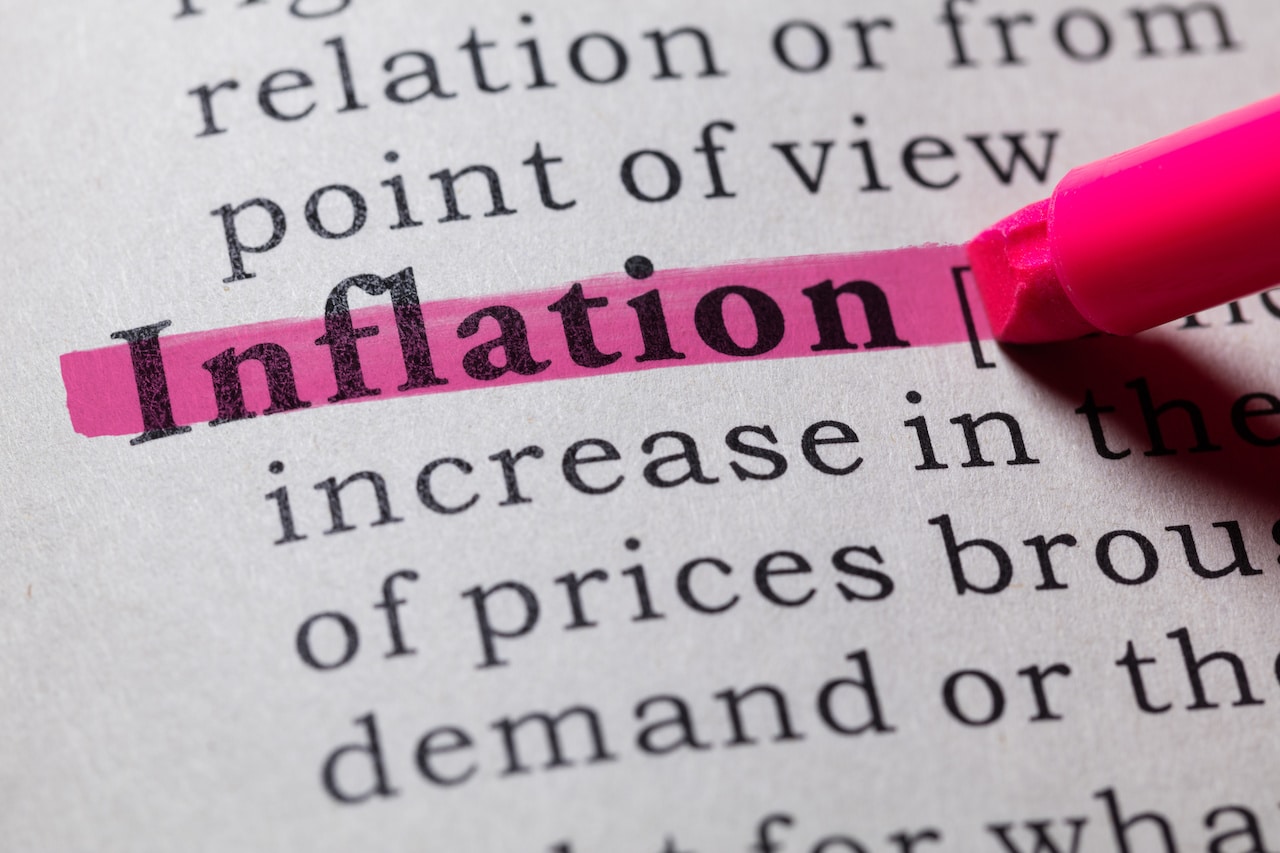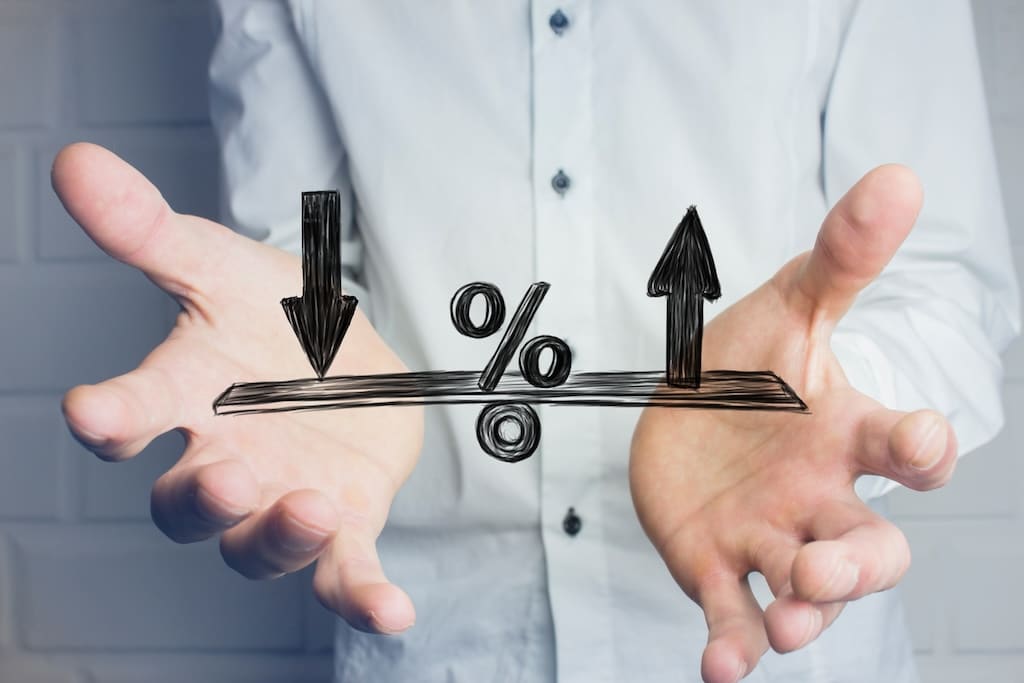Credit Sesame discusses the different kinds of inflation and what they mean.
Inflation has been in the news a lot over the past few years and with good reason. In mid-2022 inflation reached heights not seen since 1981. Though it has subsided a little, it is still much higher than consumers–and the Federal Reserve –would like.
Inflation makes a dent in household budgets twice. The first every time you buy something, from your weekly groceries to a new car to your next vacation. The second is in the form of higher interest prices. As prices have surged, American consumers have been borrowing more to make ends meet. However, inflation also raises interest rates, so borrowing is an added cost.
Economically, this has made inflation public enemy number one. A tricky thing about dealing with inflation is that it comes in many forms. Understanding which of the different kinds of inflation are most severe and which are bucking the upward trend, can save you money.
CPI Index
When you hear someone talk about the inflation rate, chances are they mean the Consumer Price Index (CPI). The CPI is a monthly figure published by the Bureau of Labor Statistics. It is the average price paid by urban consumers for a basket of goods and services. It is an indicator of how much consumer prices have changed from month to month. It’s a useful yardstick for inflation, but it’s not the only one.
PCE Price Index
While the CPI is the most widely-quoted inflation index, the Federal Reserve generally refers to a different monthly measure, the Personal Consumption Expenditure (PCE) Price Index. The PCE looks at how much consumers are spending. Like the CPI, it averages prices on a wide variety of things people buy and weights those prices according to how much people buy. It includes a broader range of goods and services, such as health care, housing, and financial services.
PCE Price Index vs. CPI
The PCE Price Index adjusts its formula more frequently than the CPI. This allows it to capture changes in what people are buying more accurately. This is useful as consumers adjust their spending choices according to what is relatively cheap and what has become more expensive.
That may seem a subtle distinction, but making those adjustments is one way consumers deal with rising prices. That difference may be the reason why the average inflation rate measured by the PCE Price Index has been about half a percent a year lower over the past 50 years than the rate measured by the CPI.
Significantly, when the Federal Reserve talks about bringing inflation down to 2%, they’re talking about the PCE Price Index, not the CPI. Still, the CPI gets most of the press coverage.
Producer vs. consumer prices
Another inflation index you might hear about is the Producer Price Index (PPI). The PPI reflects the prices charged by the companies that produce goods and services, as opposed to the retail prices paid by consumers.
Over time, the PPI and CPI have increased at fairly similar rates. However, the PPI is considered more of a leading indicator of where inflation is going. Price trends at the producer level are more likely to be passed along to consumers than the other way around.
This is why it was considered significant that the PPI declined by 0.5% in March of 2023. That was the biggest drop in producer prices since the early months of the pandemic.
This decline in producer prices might signal a turning point in the recent inflationary trend. However, one month may be a fluke rather than a trend. But the PPI is worth watching if you want a possible sneak preview of where inflation is heading.
Core inflation
Core inflation measures the change in consumer prices except for those involving food and energy.
Excluding food and energy from any measure of inflation might seem pointless. After all, when was the last time you made it through a month without food or energy?
However, food and energy are sectors that are especially sensitive to short-term price fluctuations. In other words, these prices jump around a lot from month to month. Often, those short-term jumps aren’t indicative of the overall inflation trend.
Ultimately, core inflation is useful in measuring how broadly inflation has spread to sectors of the economy beyond food and energy. When core inflation is high, it suggests that inflation might be harder to subdue.
In March 2023, the low CPI reading of 0.1% was due in part to no increase in food prices and a 3.5% decline in energy prices during the month. However, the core inflation rate remained at 0.4%. That means inflation is likely to remain stubborn, as energy prices are unlikely to decline every month.
Eggflation and other outliers
Another thing that puts inflation in perspective is recognizing how much price changes for individual components. For example, a few months back the price of eggs rose so rapidly that the term “eggflation” was coined.
With a price increase of 36%, eggs were one of the fastest-rising components of the Consumer Price Index for the year ending March 31, 2023. In contrast, bacon dropped in price by 5.5% over the same period.
The point is, inflation doesn’t affect everything equally. Fast-rising egg prices were very noticeable because they are something many people buy every week.
At the other end of the spectrum, smartphones had the biggest price decline of any component of CPI for the year ending March 31, 2023. However, the 23.9% average decline in smartphone prices over that period would likely go unnoticed unless you happened to be buying a smartphone within the past year.
Substitution
When one good rises in price significantly consumers look for cheaper alternatives. Economists call this consumer behavior “substitution.”
For example, in the year ending March 31, 2023, the price of canned fruits and vegetables rose by 10.2% The price of frozen fruits and vegetables rose by 15.1%. Both those increases were well above the overall 5.0% rate of inflation.
Meanwhile, the average price of fresh fruits and vegetables declined over the same twelve months. That left consumers with the reasonable option of buying more fresh rather than frozen fruits and vegetables.
Understanding the different kinds of inflation can help you budget accordingly. Purchasing fresh fruit instead of frozen does not seem like too much of a hardship. Laying off eggs for a few months may be harder, but perhaps you could console yourself with a new smartphone.
If you enjoyed What do the different kinds of inflation mean for you? you may like,
Disclaimer: The article and information provided here is for informational purposes only and is not intended as a substitute for professional advice.




















